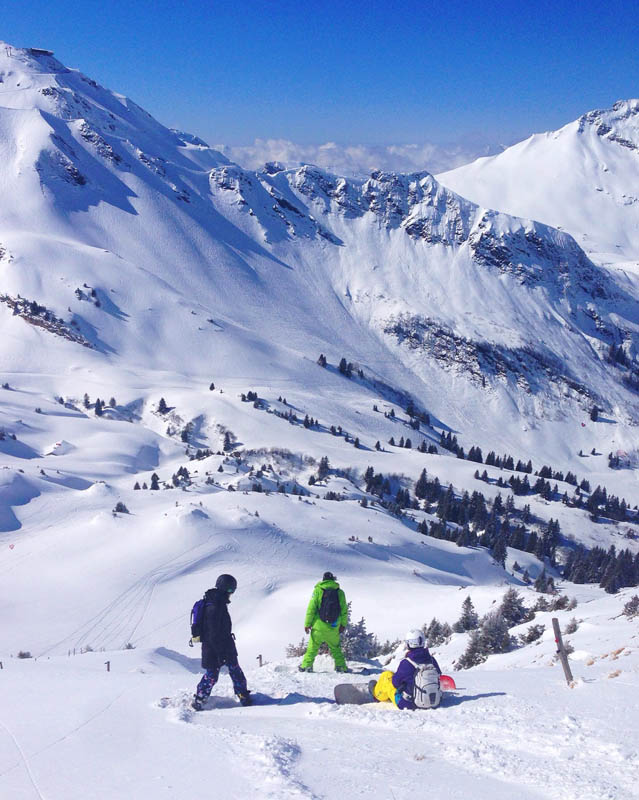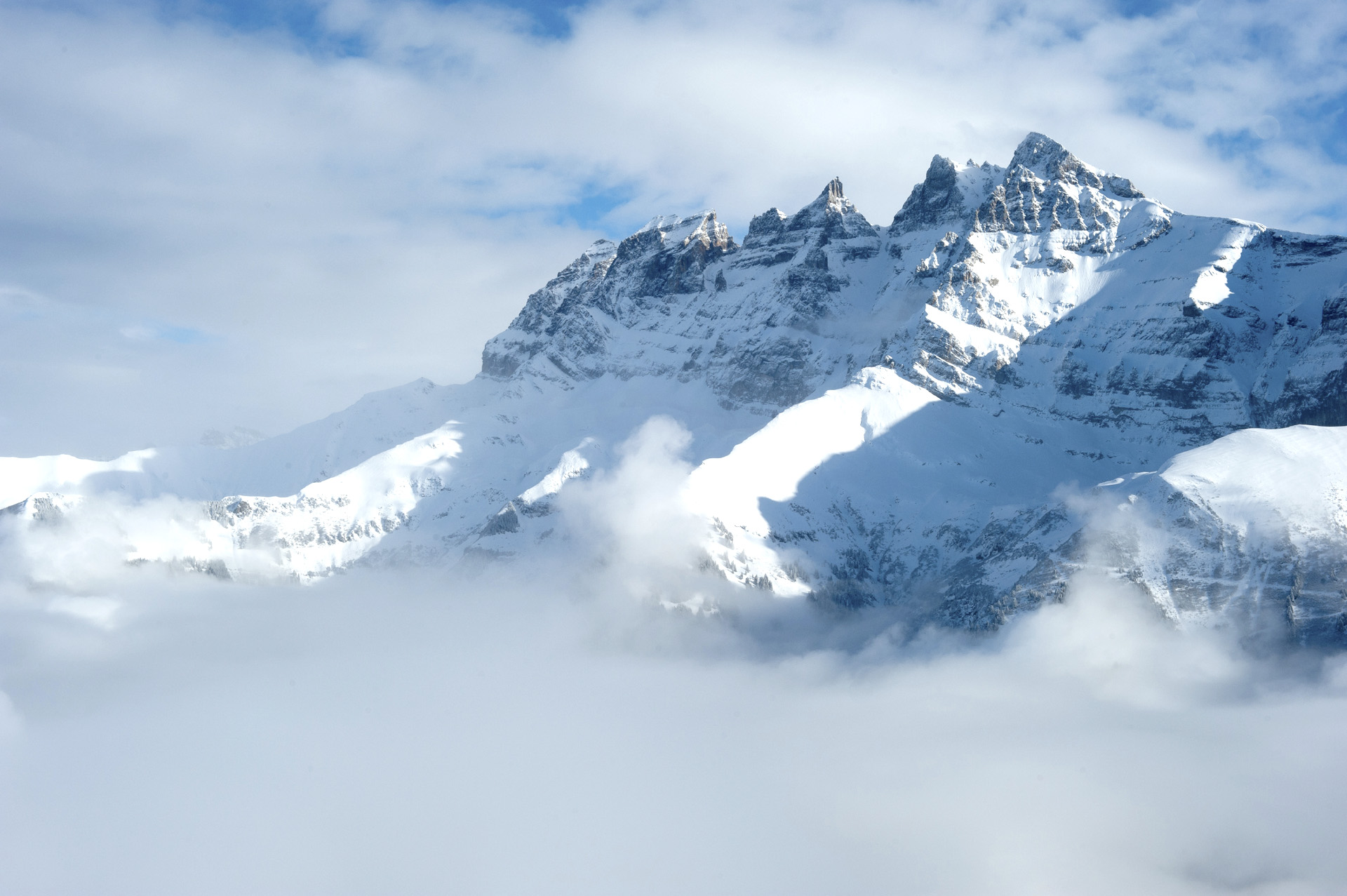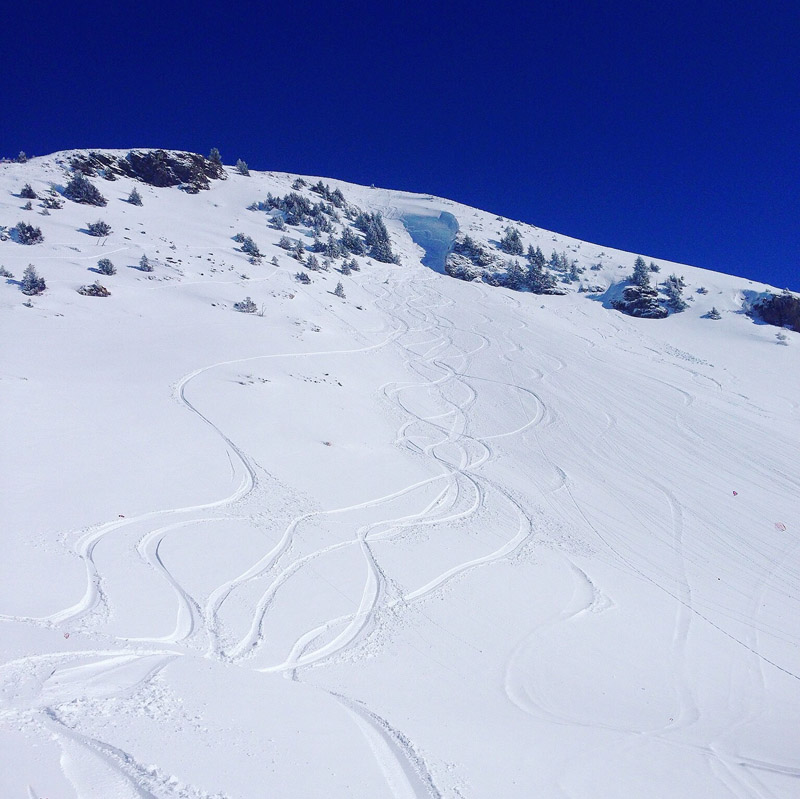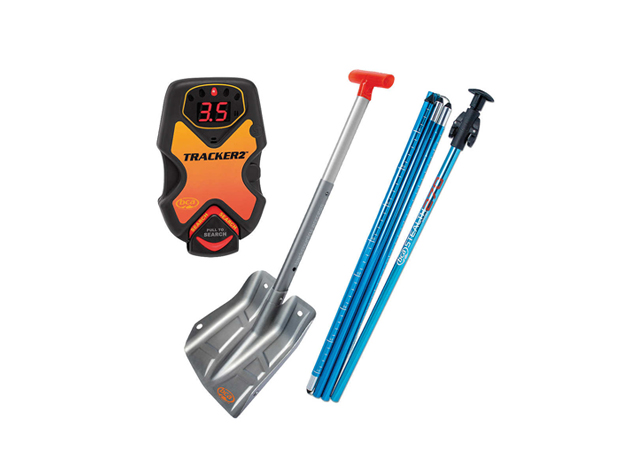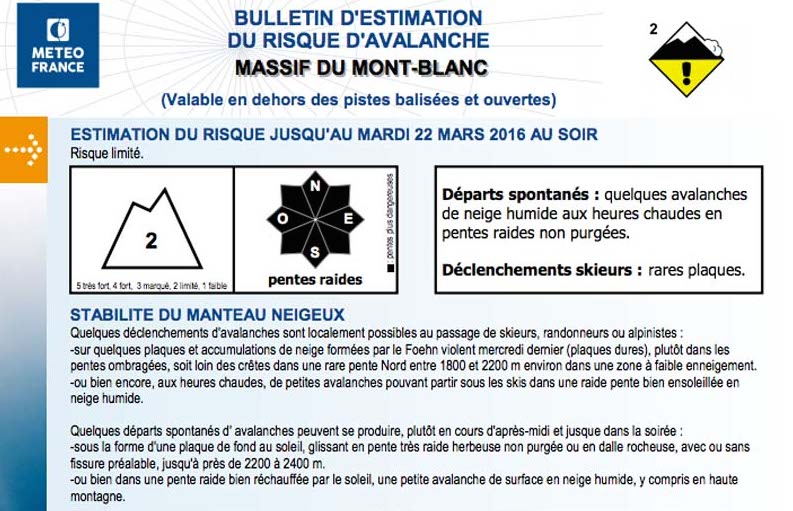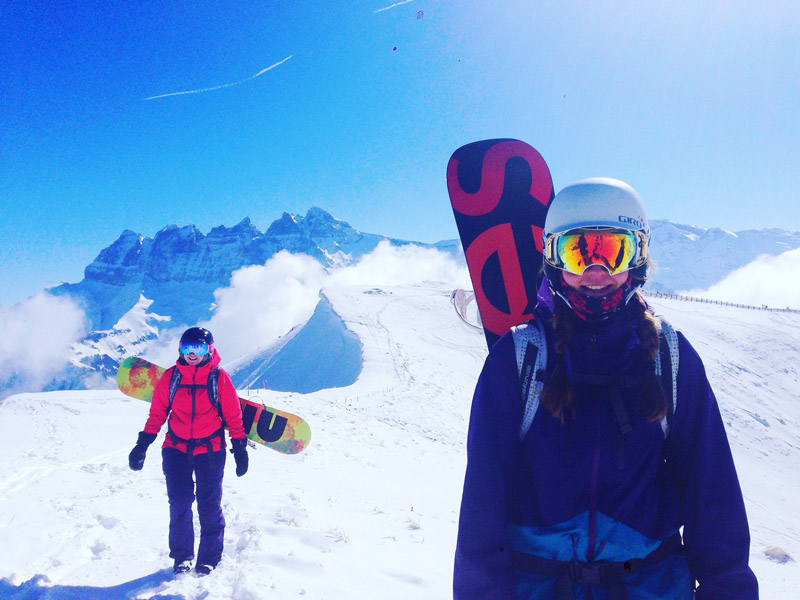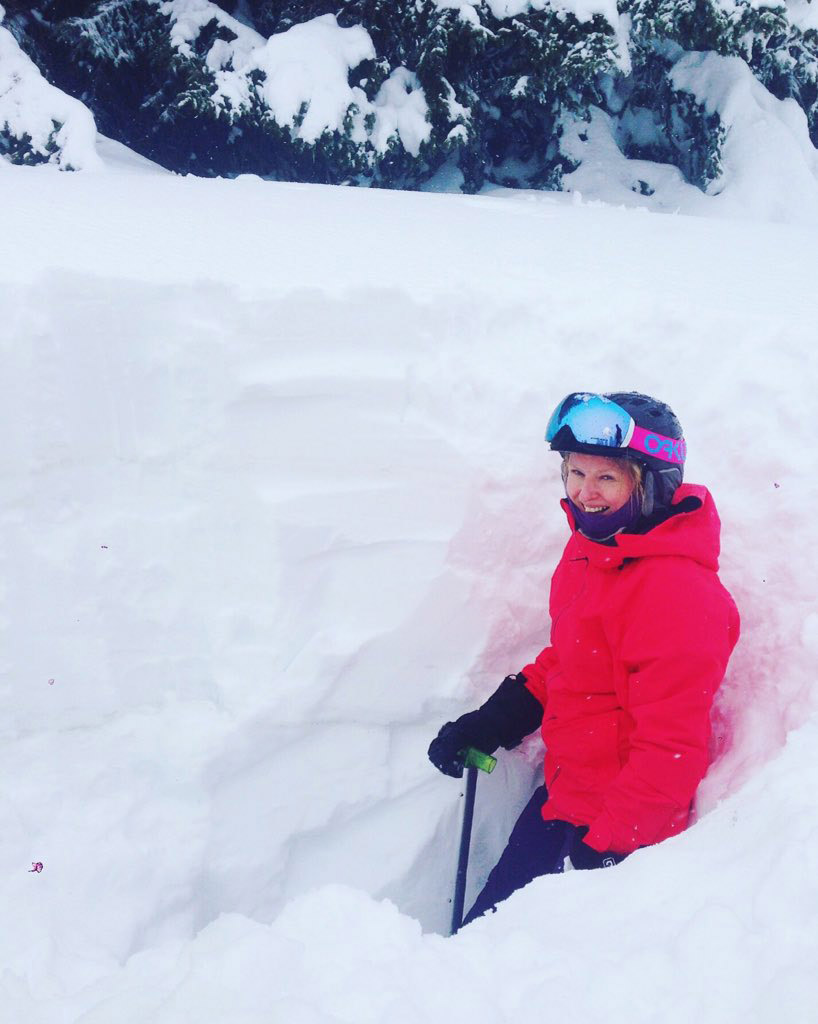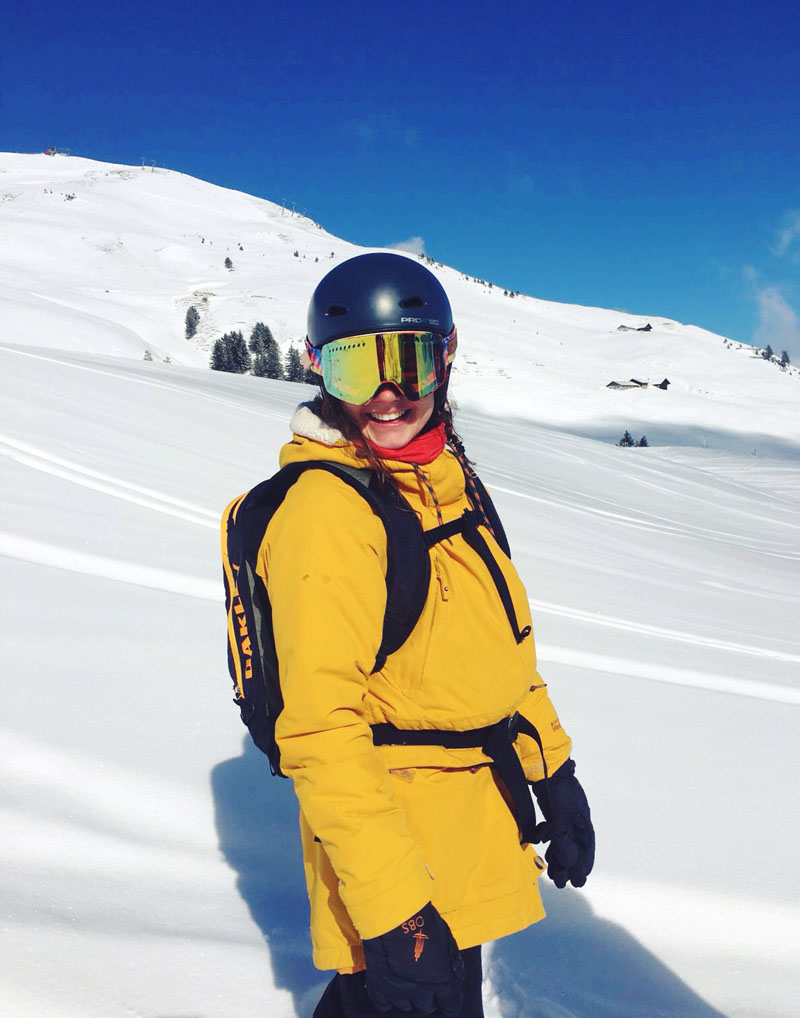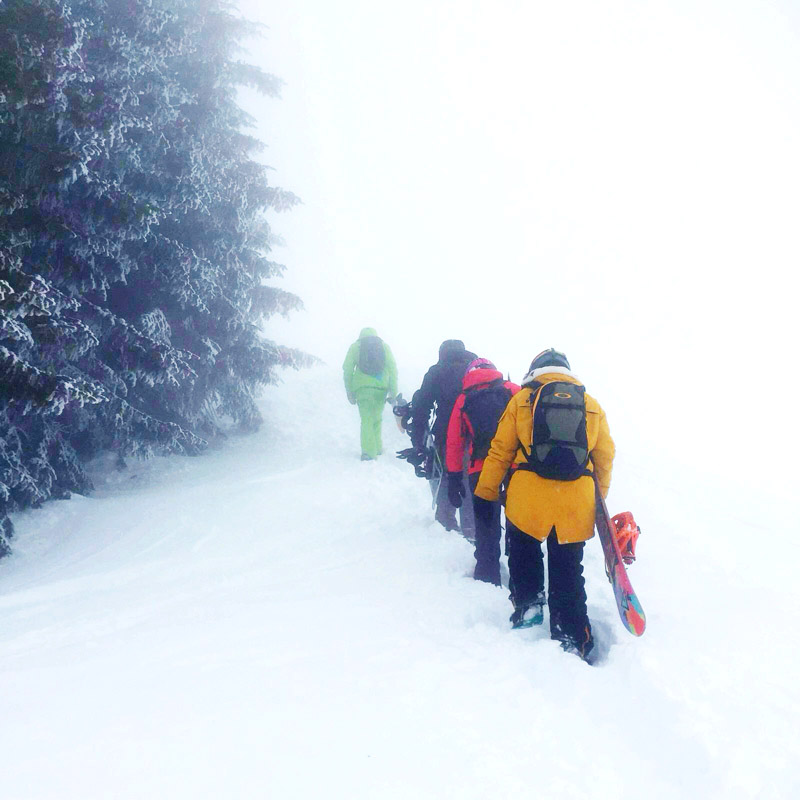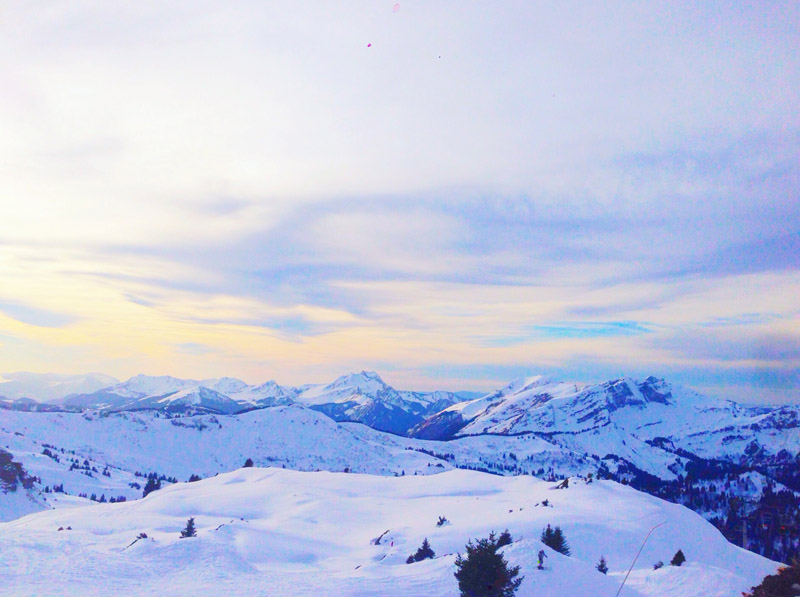WHAT KIT WILL I NEED?
When it comes to wearing the right clothes for a backcountry course, I would recommend layering up. One minute you will be freezing your butt off on a chairlift in the snow, the next you’ll be hiking along a ridge, sweating buckets.
The best way to cope with varying temperatures is by wearing lots of layers, so you can add or remove depending on how you feel.
As a basic guide, start with a sweat-wicking base layer like merino wool, followed by an insulated jumper and then a good waterproof snowboarding jacket or hard shell outer layer. It’s always a good idea to bring a spare layer in your backpack as well.
It’s also a great idea to bring snacks, water and a spare pair of gloves and goggle lens. You’ll appreciate it when your morning gloves are soaked by lunchtime and the weather has started to close in again.

When it comes to avalanche safety kit, there are three key pieces of kit you should have in your kit bag (and know how to use them):
Transceiver
Probe
Shovel
There are loads of different types of avalanche kit on the market – from avalungs to airbags – but if you are looking to just get the basic essentials, these are the three things you need.
BCA and Ortovox are some of the most reputable avalanche safety kit makers out there. I personally have a BCA Tracker 2 Avalanche Transceiver. It is really simple and clear to use. There’s an obvious tag to pull for tracking and it’s fast and responsive.
Once the battery is below 50 per cent, it is worth changing them just in case. You’ll be surprised how quickly batteries can run out, especially when the temperatures drop.
It’s best to wear your transceiver under your jacket but on top of your top jumper layer. Make sure you keep your phone away from the transceiver as it can mess with the signal.
“75 people were killed by avalanches in Europe last year alone”
When it comes to buying a probe, make sure it is at least two metres long and deploys quickly by pulling a cable that attaches the sections together.
Shovels come in all sizes and materials. It’s best to get an aluminium one as they are stronger and more durable than plastic shovels. Make sure it is lightweight, collapsible and fits in your backpack easily.
One of the great things about joining an off-piste course is this kit will be provided for you – so you can test it out before you buy your own.
Avalanche safety kit isn’t cheap, but just as you drop big money on a new snowboarding jacket or snowboarding boots, you should think about spending money on avalanche safety kit. You never know when it might save yours or someone else’s life.
